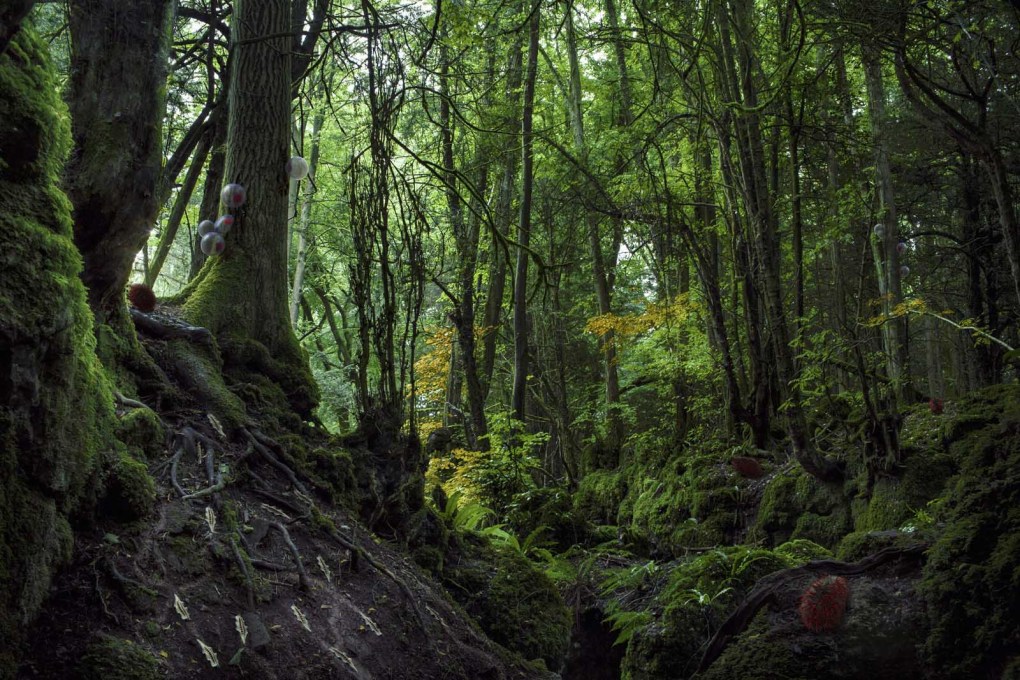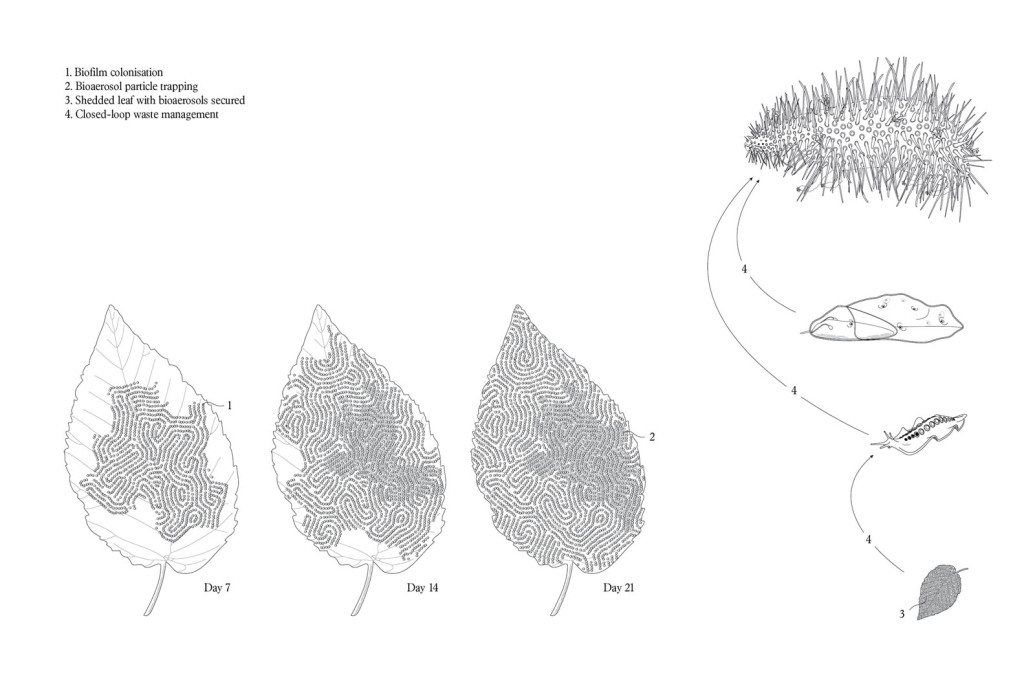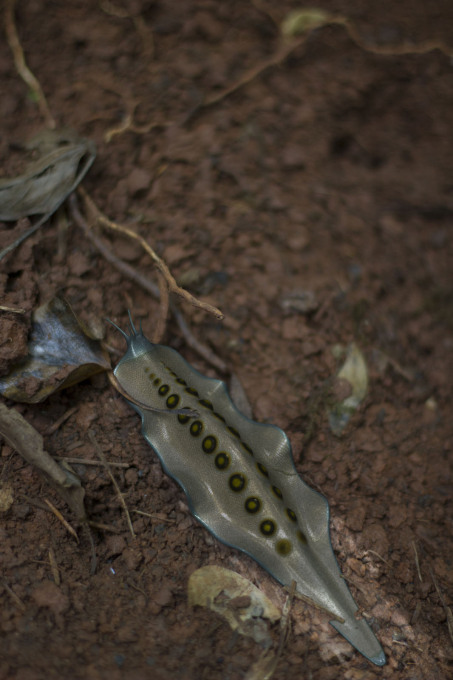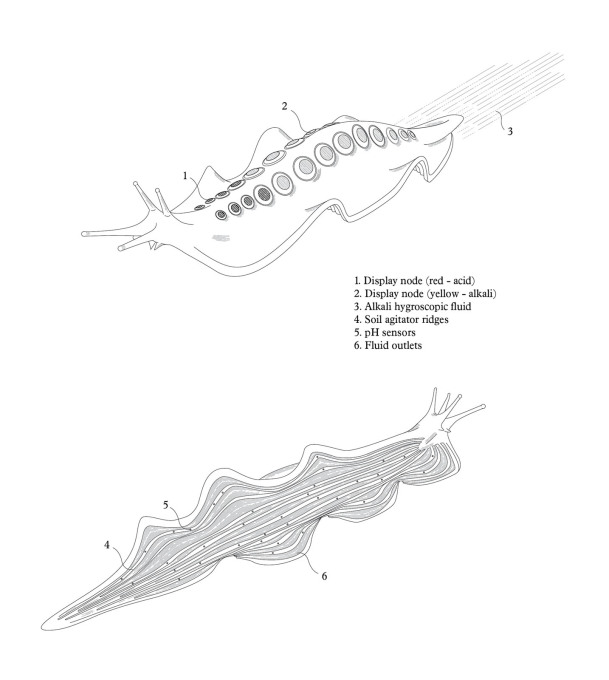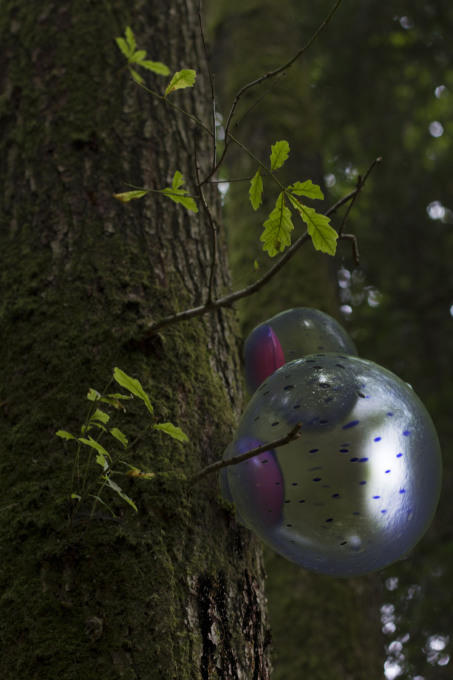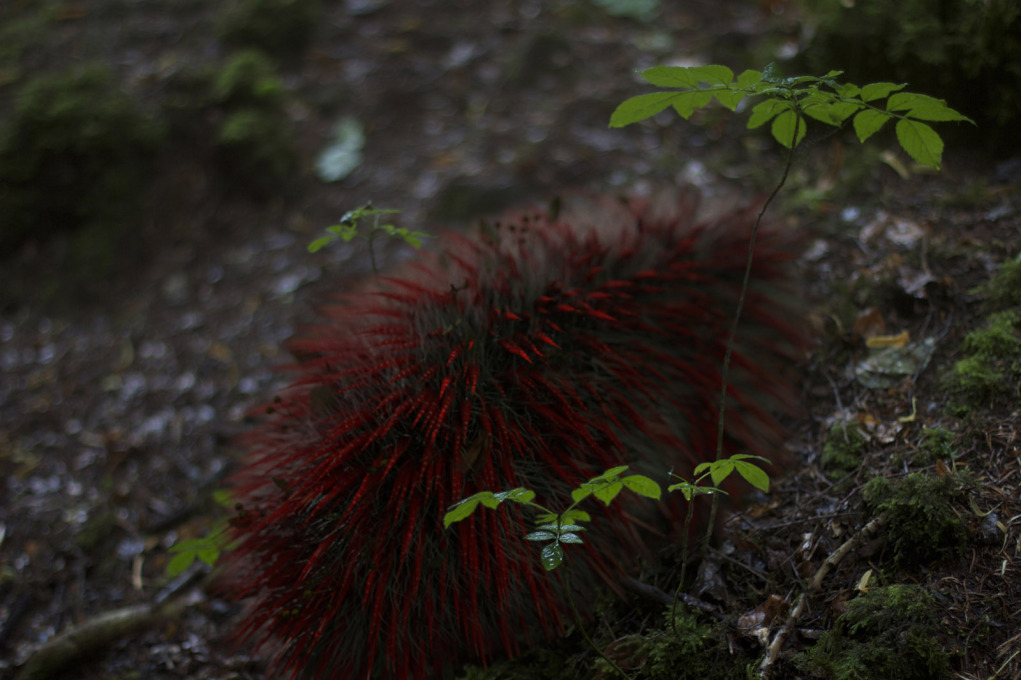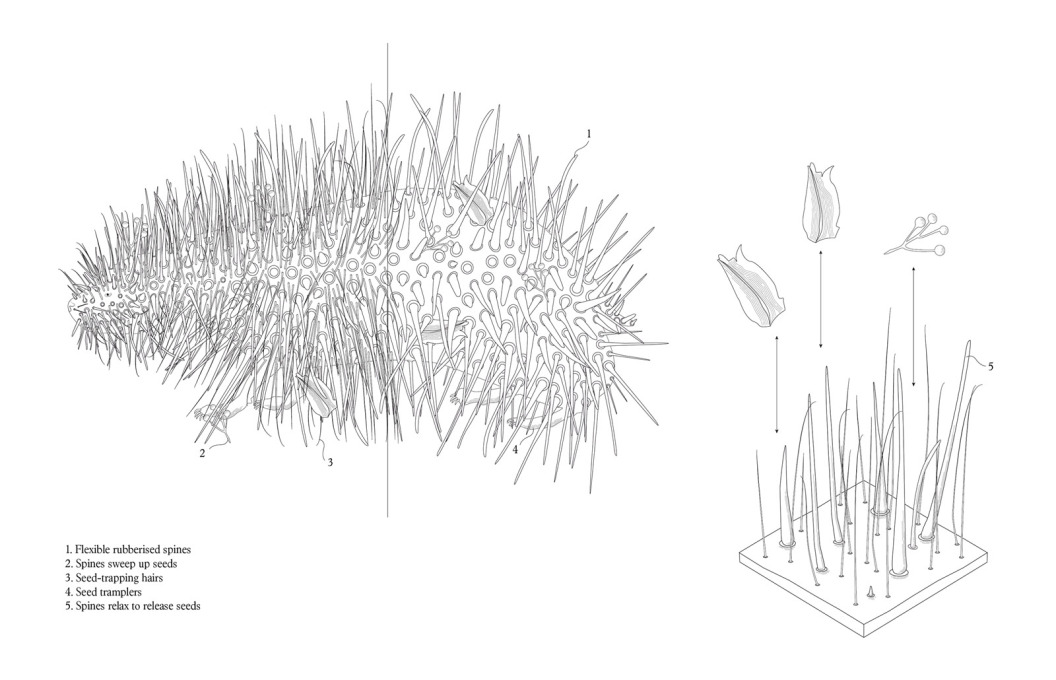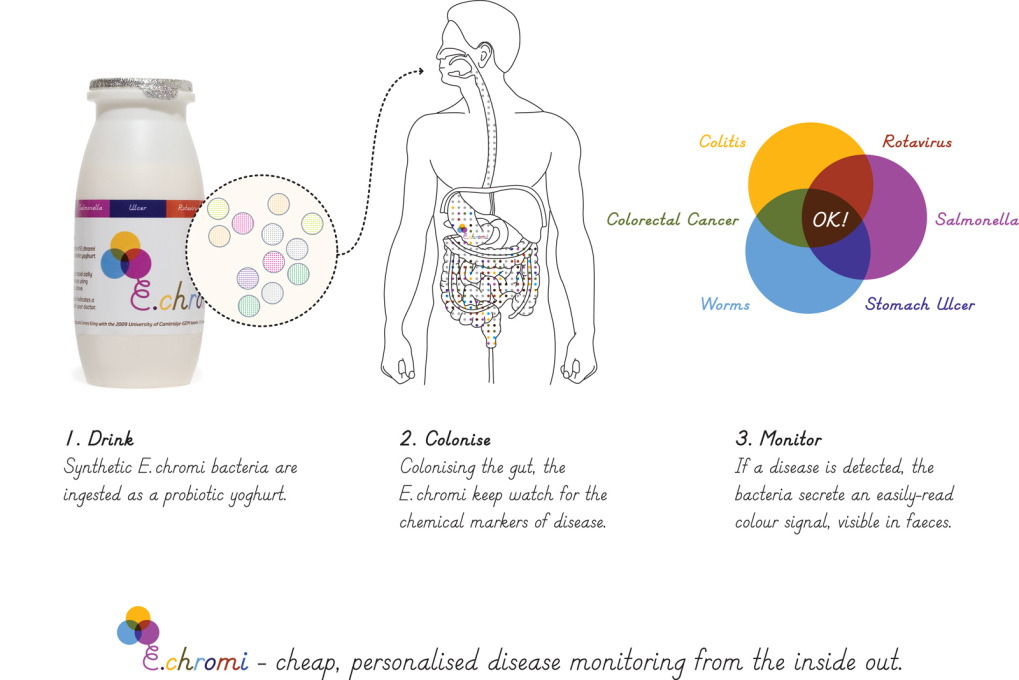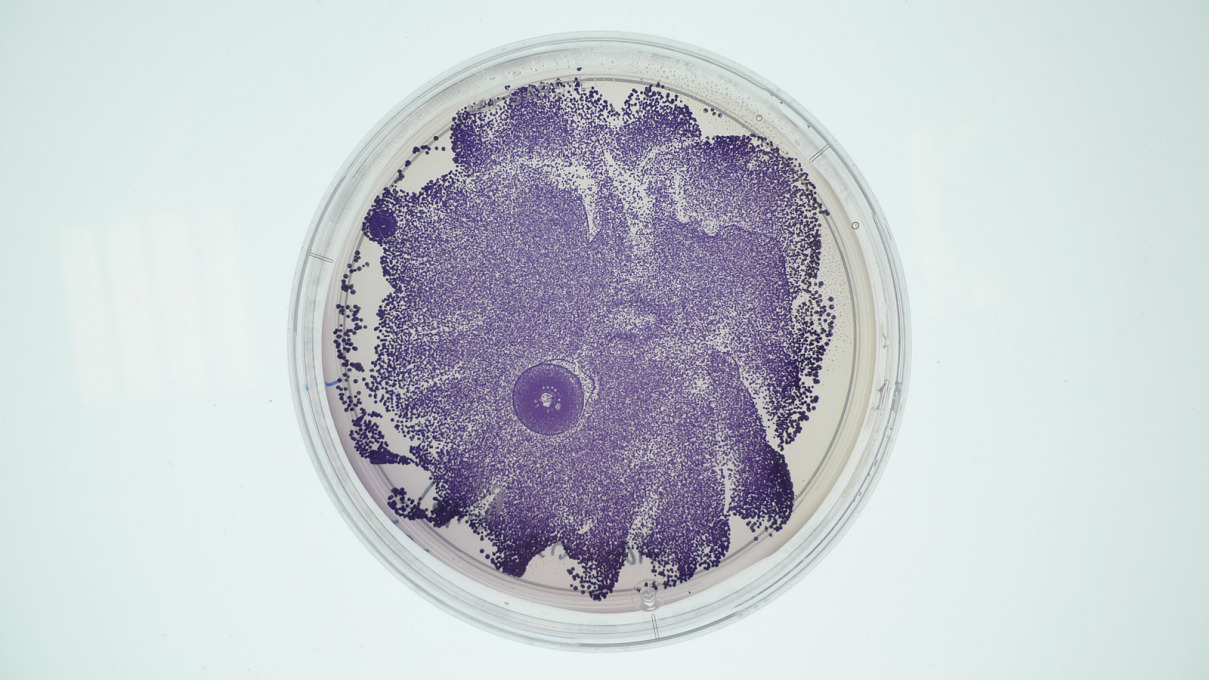Will the future be better than today? Whilst Hollywood seems to have taken a turn for the dystopian of late, Silicon Valley retains a deliriously positive view of progress via technology. Working in the ambiguous space between these poles, the designer Alexandra Daisy Ginsberg has been creating fictional scenarios that explore the role of design in the ways we imagine and reach towards the future. Yet these “design fictions” – anything from pigment-producing probiotic bacteria to slugs that can neutralise the alkalinity of the soil – are increasingly entering scientific reality, stirring up questions about the ethical implications of designing the almost-real. Upon the release of her new book Synthetic Aesthetics, When Elvia Wilk spoke to Ginsberg at the recent What Design Can Do! event in Amsterdam, she asked her about what it’s like to work with scientists and corporations and attempt to alter the – sometimes “sluggish” – course of technological innovation through design.
The way I came in contact with your work was through the E. chromi, or “Scatalog” project [see images 9-11]. It’s from 2009, but it seems like it’s suddenly come back to life.
That project would be ancient history – if it wasn't for this new development with a DARPA-funded paper from the Silver Lab at Harvard. It's essentially the first step in making our conjectures real via scientific research. Either our provocation was so successful that we did disrupt the path of scientific development, or we managed to make tangible what was in the scientific imagination but was as yet unspoken. In any case, suddenly everyone in synthetic biology is talking about poo – which is awesome, because it’s so un-sexy for a techno-utopian technology! – and this is one of the most tangible applications that’s come out of synthetic biology yet. It’s worth mentioning that I know that the lab that wrote the paper knows about our Scatalog fiction.
But they haven’t contacted you?
Not about this paper, but I know scientists at the lab. And the Scatalog concept – probiotic disease monitoring – has travelled far beyond the design community. We designed it to present to synthetic biologists, which we first did in 2009, and I’ve seen the images in scientists’ presentations at lots of synthetic biology conferences. Just the other day I saw slides that had been shown to the US Department of State that included the Scatalog image.
I doubt if the project would have travelled so far if it didn’t have such a catchy presentation.
Well, it is six coloured shits in a briefcase!
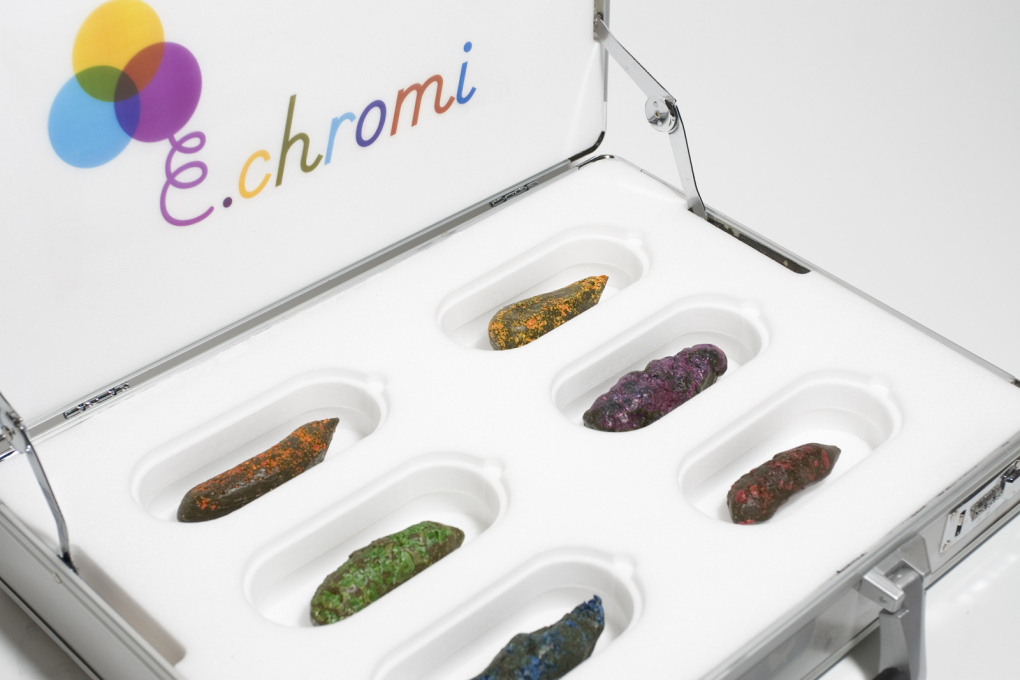
Sure, it’s really basic and easy to understand – like it’s for a trade fair.
That was the original motivation. We wanted to show the results of the workshops that we did with the Cambridge iGEM team [International Genetically Engineered Machine] alongside the students’ presentation at the iGEM competition in 2009, but it would have cost something like 800 dollars for a presentation slot – so we tried to figure out how to do a guerrilla presentation. We needed something we could carry around like travelling salesmen. Originally we were very shy about it, thinking of making loo paper, or maybe a Pantone strip on a toilet seat…and then we thought of the briefcase and decided to just go for it. When we were at iGEM we spent so much time just talking to people about our workshop and collaboration, so it served its function really well.
But when it became an image floating online rather than a part of a longer narrative, you were less able to direct the conversation. Letting digital images out into the world is like letting a genetically engineered slug out into the wild…
That’s what so strange about design fictions. I’m trying to work out how to leverage design fictions more effectively for change – if that’s actually what we want to do with them. Are they “just” art? It’s fine if that’s what the designer wants, but I am talking about them in terms of debate, critical thinking and change.
So do you want any of your projects to work like hoaxes, where you make something that enters the realm of reality and then the act of criticism is in the “revelation” that it was fake?
That’s not the goal. The Scatalog works precisely because it doesn’t look totally real when you see it in person. On the other hand, the design language of Designing for the Sixth Extinction [see images 1 + 12] is not quite right; it might be too realistic. When presented as an exhibition it worked really well – seeing the picture on the wall was amazing. It’s about one-and-a-half by two-and-a-half metres, and when you get up close to it you start spotting all these strange things hidden in the forest. But when the digital image started travelling around on blogs outside of its frame on the wall, it was less strange and more literal, allowing for misunderstanding. Afterwards all these blogs came out saying “Daisy Ginsberg says synthetic biology can save nature!” and I’m thinking, no, synthetic biology says it can save nature!
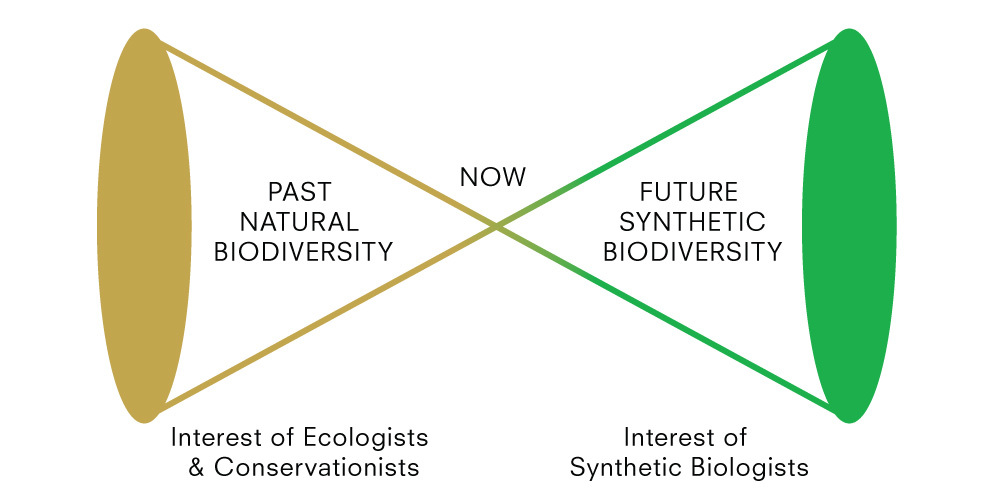
It’s so strange that your fictional image is interpreted as being an expression of your opinion. Writing, for instance, doesn’t have quite the same danger of being mistaken for reality.
I’ve said before that when you read a piece of fiction, or you go to the cinema, you have this framing that sets up a social contract: you know this isn’t real. We don’t read design fictions in the same way yet, but I think we can learn to – and I don’t think the danger they can be misread is a reason to stop making them. There’s been lots of discourse recently about critical design, as in “why don’t designers go and solve some real problems?” I think we are solving real problems, but we’re looking at them in a different way. Synthetic biology is poised to become a really complicated technology, and how it’s communicated to the public is going to be everything.
Right, the way technologies are interfaced with a public audience decides whether or not they’re picked up or treated as dangerous.
It’s a problem when design simply becomes a communication device for any campaign. I think there should be opportunities for designers to define the agenda sometimes. This does not mean I call myself a “speculative designer”, a term that’s never made sense to me – am I speculating on being a designer? I prefer to think about potential via the improbable or even the impossible.
Only recently has the alternate term “social design” permeated my brain – it seems like it just means “designers wanting to change the world”, but the question is how this will happen. Will the designer become a social scientist, or try to facilitate positive change like urban farms with market food trucks, or can the designer have agency and authorship as well?
There’s room for all approaches, isn’t there? Some designers will make great letterheads, some will make great letterheads for a “good cause”, and some will want to re-design the cause itself.
And sometimes those all go hand-in-hand. The world we’re all operating in is so complex that you won’t be able to get a cut-and-dry explanation of what you are looking at or how to interpret it. When people ask me if my bio-engineered slug is really going to change the world, well, there’s no single answer to that question.
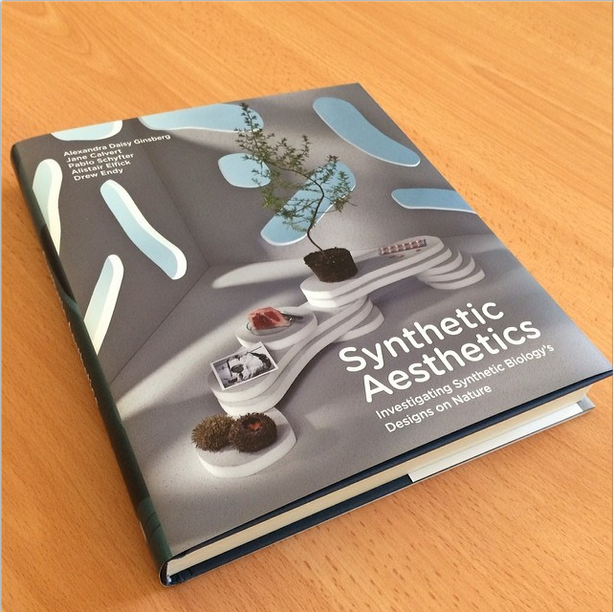
Do you think of yourself as an educator?
Not yet, I continue to be educated. I’ve gone back to being a student again!
What’s your PhD called?
“The Dream of Better”. I’m looking at why we think the future’s going to be better than today, and what role design plays in the construction of hope around technology. Design tries not to present itself as political, but it’s definitely not neutral – and I think designers try to shy away from that reality.
For the practical part of my PhD I’m using synthetic biology as a case study to look at how design can imagine alternative ideals. I’m working with three different synthetic biology centres over the next three years to test out the methods. One is the Synthetic Biology Centre at Warwick University. Rather than directly engineering organisms, they’re investigating how biology can design itself. They’re interested in designing parameters within which things can evolve, in the same way that we design laws and systems and then society forms around them.
Like designing a self-perpetuating ecosystem?
Yes, and if it’s self-perpetuating, where does that leave the designer?
It seems like you’re occupying some really unusual roles, working between groups who don’t usually come into contact with each other.
I’m thinking about how to connect synthetic biology with design, creating products that are more like points of contact than permanent branded items – challenging the current modes of production and challenging synthetic biology. I’m really interested in how networks are constructed and how power works.
As you work increasingly closely with these funding bodies and large corporations, is the aim to introduce a system of checks and balances into the way they operate?
I don’t know if we can. Yet it is truly amazing that companies or organisations are allowing us to take part in the conversation. There’s a compromise going on, and I’m working out how far I can go. I’m really lucky that the doors are still open. Science and funders and governments are really worried about a total public rejection of this technology, so I think they’re receptive to finding nuanced ways to have the debate. There is compromise both ways.
The conversation I’m continually trying to open up is a nuanced one. I don’t want to do public engagement work promoting a specific technology, though I’m often asked to do so. What I do might inadvertently promote synthetic biology in that I have to explain what it is – but I think that ultimately the technology itself will benefit if people realise that it’s not a yes-or-no problem, and there is huge complexity that needs to be explored.
I don’t know if it’s possible to be critical without being complicit as well.
And it’s not possible to say that I’m being used to promote any technology in a straightforward way. But I’m willing to engage with the systems producing these products, if it could mean that a technology ends up being more thoughtfully made.
– Interview by Elvia Wilk
Synthetic Aesthetics - Investigating Synthetic Biology’s Designs on Nature
Authors: Alexandra Daisy Ginsberg, Jane Calvert, Pablo Schyfter, Alistair Elfick, Drew Endy and others.
Published by The MIT Press, Cambridge, Mass. / London, England, 2014.




